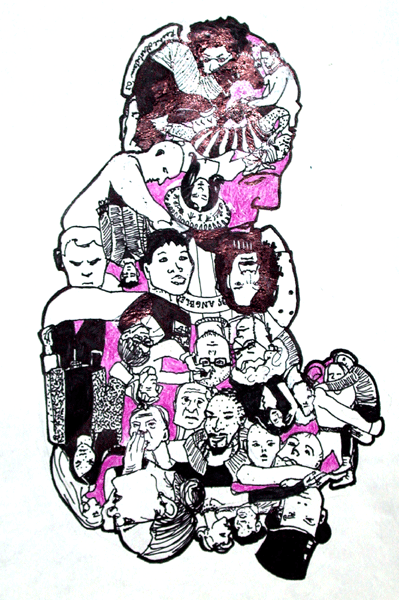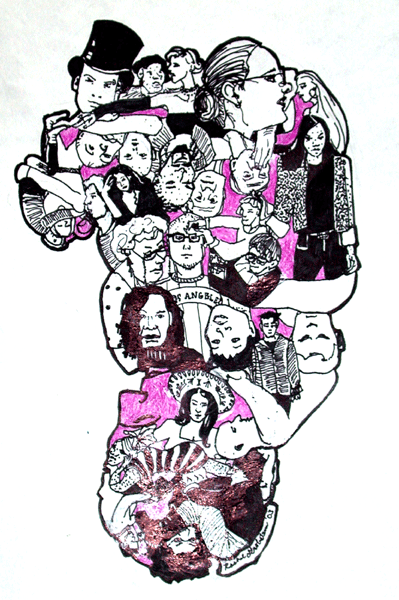Made available on Serendip
In association with Making Sense of Diversity: An Exploration, a world wide conversation
We began by describing what we knew about last year's sustained dialogue: the initial exciting information sessions, followed by a sense of "dropping off" and a disappointment that the groups were smaller and less diverse than had been hoped. It was suggested that the "strongest meetings" were the third or fourth sessions, when folks knew one another "well enough to be comfortable," but "not too well"; they weren't yet "friends." There was a common perception that after that point, the groups were dominated by a sense of "wanting people to like you," "wanting good feelings to prevail"--so that problematic statements (for instance) were less likely to be challenged by others in the group.
We talked quite a bit about this issue: whether the very notion of "sustainability" prevents hard conversations from happening, among a group of women who want to "get along." Is it really "all about gender"? Is it the case that populations of women tend to want to maintain a sense that "it's okay," and so refuse to ask "pointed questions"? Since so many of us already know each other, there are established patterns of "not bringing up" difficult questions. Is this environment too cozy, too safe? How can we we create the sort of space which can sustain the edginess necesary for serious conversation? What is the role of the moderator? How much can she challenge what is said?
What would make folks want to come to gatherings like these? What's in it for us? For others? Those who are willing to come together just for the purpose of enjoying the discovery of who others are will always be a relatively small subset of the population. Does the project need a more concrete focus than just "more talking"? Did it need an "action piece"? Is there a way to get "more carry over" from the program to "the rest of life"? Where does Sustained Dialogue sit in relation to other conversations and activities on campus?
How did the project get constructed? Who owns it? Do we need to re-think how the program is advertised? There were problems about lack of institutional support for the program last year. Does there need to be a stated goal upfront (beyond "further conversation") in order to get folks involved in the first place? Is "just talking" a "white liberal thing"? Does there also need to be "buy-in from the top," a conviction that what arises in these conversations "will be listened to by those in power"? What would induce more faculty and staff to be involved?
Might the group take on, as this year's project, translating the manual for "Sustained Dialogue" (which was originally written for a large co-ed university) into our own context, so that it applies to a small liberal arts college for women? Do participants need to be hand-picked for diversity? Sexuality has a lot of "social capital" on campus; might that form the focus of the conversations?
This discussion is invited to continue on line.
"Making Sense of Diversity" will resume in person at noon on Friday, October 22, when Linda-Susan Beard and Emily Madsen will lead a conversation about "Organic Discussions":
Diverse Pedagogies for Diverse Peoples
."
| Return to Schedule for Friday Noon Conversations
| Forum
| Bryn Mawr Conversation
| General Conversation
| Serendip Home |
These pages are being maintained by Christina Florio, with support from Audrey Flattes and Nia Turner and sponsored by the Bryn Mawr College Center for Science and Society and the Serendip website. Send us additional comments or suggestions at Serendip
© by Serendip 1994-2004 - Last Modified:
Thursday, 14-Oct-2004 15:28:23 EDT

